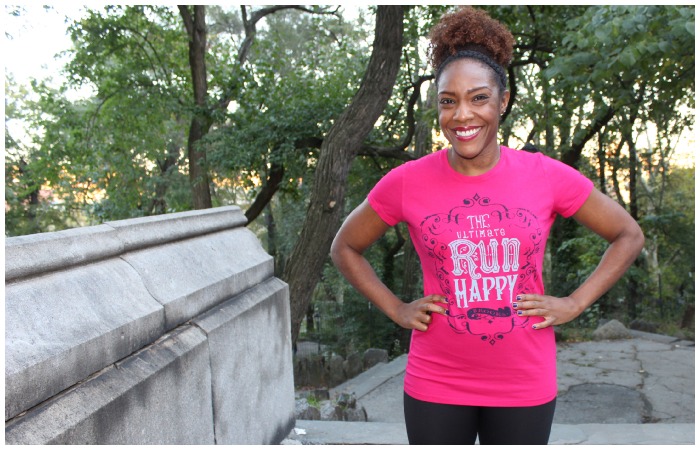
Recreational fun that doubles as therapy is the best way to describe my running relationship. Not too competitive, yet challenging enough to change me (mentally and physically). Simply put, I can’t imagine my life without running. And even after almost a decade of lacing up week after week, I also can’t believe how my body does it. Mile after mile, it manages to endure, and this mere fact not only fascinates me but empowers me to commit to other challenging things in life. In fact, when I was running my first marathon (the New York City Marathon) in 2013, I remember whispering to my body three words: “please forgive me.” I hit the wall more times than any of the “how to prepare for your first marathon” articles I read mentioned. So when I crossed the finish line I whispered to my body two words: “thank you.”
My body did forgive me and continues to do so. However after the marathon I committed to being much more kind and intentional about my running game. If I wanted longevity in this sport, I had to cross train with purpose. You see, cross training as a runner is like having insurance while driving. You don’t always see it working, but if and when you need it – it’s there. Also, like insurance, there are different cross training plans out there. What works for one runner may not work for another. However in my case I learned the hard way “what works” for me.
My cross training needs? I have one foot that pronates and one that doesn’t. So when I run, one side of my body is doing one thing while the other side is doing another. The result? Back issues. At first I felt my back only while running, then it was also while standing, and then finally the worst – I was feeling discomfort all the time. I went to see countless doctors, physical therapists, acupuncturists etc. and the verdict was my Quadratus Lumborum (also known as the QL) was inactive. The QL connects the pelvis to the spine, so can therefore easily become the source of lower back pain. When it’s inactive the gluteus medius and minimus both forget how to fire – therefore walking, running, stepping, etc. is now initiated in the low back. This immediately made sense to me and once I coupled this diagnosis with my personal training experience, I was able to create a regimen that helped strengthen the weak muscles in my core, lengthen my hamstrings, activate power in my glutes and increase the range of motion in my hips.
This regimen has not only been miraculous in coming back from an injury but has also totally reinvented my running experience. Many new runners believe running is all about the strength of your legs, but in treating my inactive QL I realized that the real power in running also comes from flexible hips, a strong core, mobile hamstrings and strong glutes. Enjoy these exercises… injured or not.
Exercise #1: Dynamic Lunge
Opens the hip flexors and stretches the hamstrings. 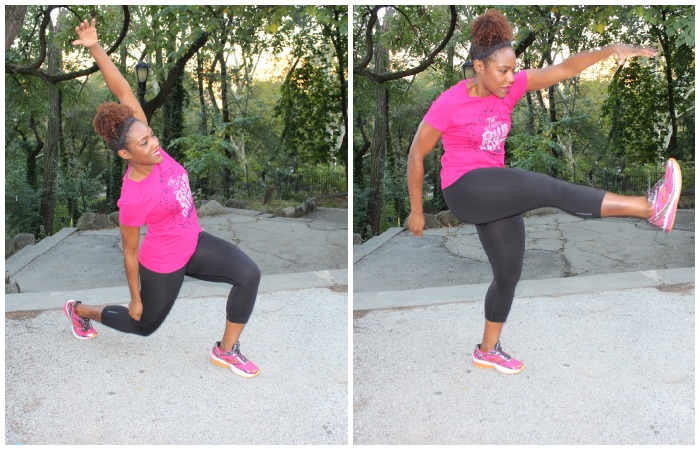 Step backwards into a reverse lunge and extend the same arm overhead into a side bend. Engage your core, pushing off your forward leg, and swing your back leg forward and reach the opposite hand toward your toes. Repeat one side 10-12 times and then switch legs.
Step backwards into a reverse lunge and extend the same arm overhead into a side bend. Engage your core, pushing off your forward leg, and swing your back leg forward and reach the opposite hand toward your toes. Repeat one side 10-12 times and then switch legs.
Exercise #2: Resisted Pelvic Bridge
Strengthens the glutes and hamstrings while facilitating movement from the core. 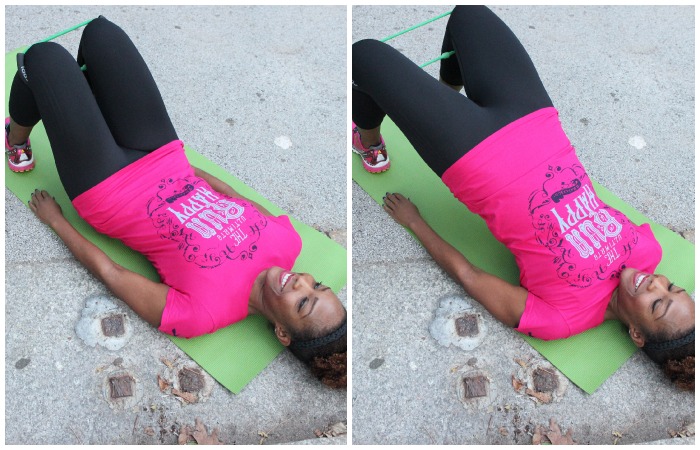 Start lying on your back with your knees bent and your heels under your knees. If you have one, place a resistance band around your knees. Engage your abs, glutes and hamstrings to push up and bridge your hips away from the mat. Hold at the top and drop the knees out to the side. Repeat 15-20 times.
Start lying on your back with your knees bent and your heels under your knees. If you have one, place a resistance band around your knees. Engage your abs, glutes and hamstrings to push up and bridge your hips away from the mat. Hold at the top and drop the knees out to the side. Repeat 15-20 times.
Exercise #3: The Clam
Strengthens the outer thigh, glutes and core. 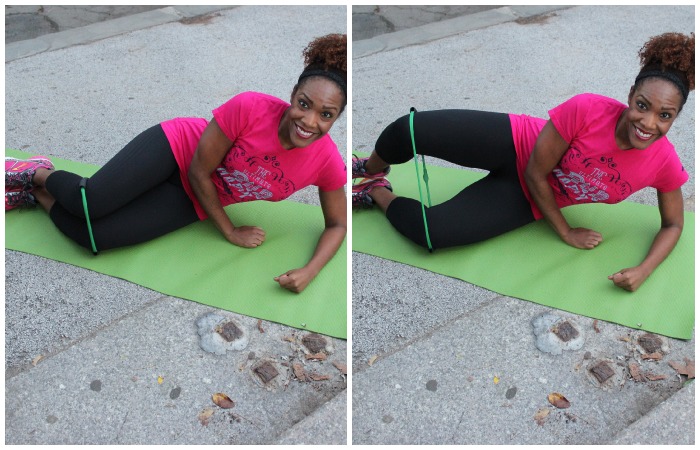 Start lying on one side with knees bent and a resistance band around your knees. Engage your core, keep your heels together and open your knees by squeezing your glutes. Release and repeat 20 times on each side.
Start lying on one side with knees bent and a resistance band around your knees. Engage your core, keep your heels together and open your knees by squeezing your glutes. Release and repeat 20 times on each side.
Exercise #4: Dynamic Side Plank
Elongates the side of the waist while working the obliques and outer thigh.
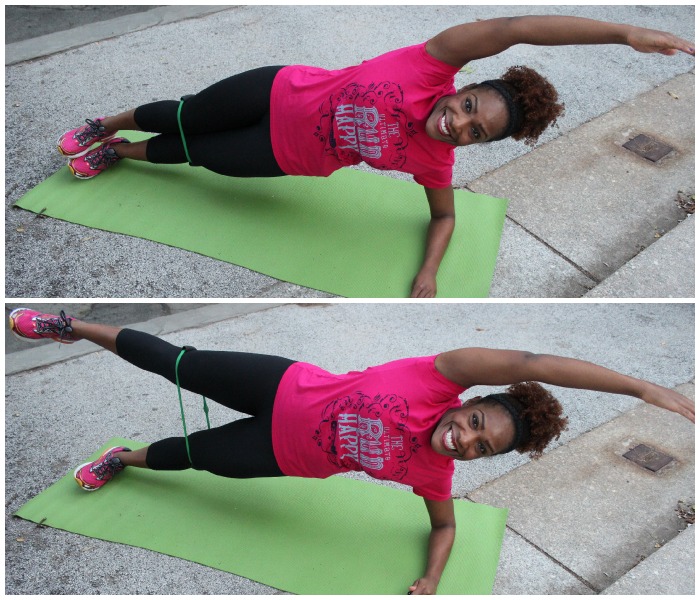 Start lying on one side with your legs in line with your hips and shoulders and a resistance band around your knees. Engage the obliques and lift up into a side plank. Then, hold that position and use your top leg’s outer thigh to lift the leg up a few inches. Reverse this sequence and repeat 10 times on each side.
Start lying on one side with your legs in line with your hips and shoulders and a resistance band around your knees. Engage the obliques and lift up into a side plank. Then, hold that position and use your top leg’s outer thigh to lift the leg up a few inches. Reverse this sequence and repeat 10 times on each side.

No responses yet